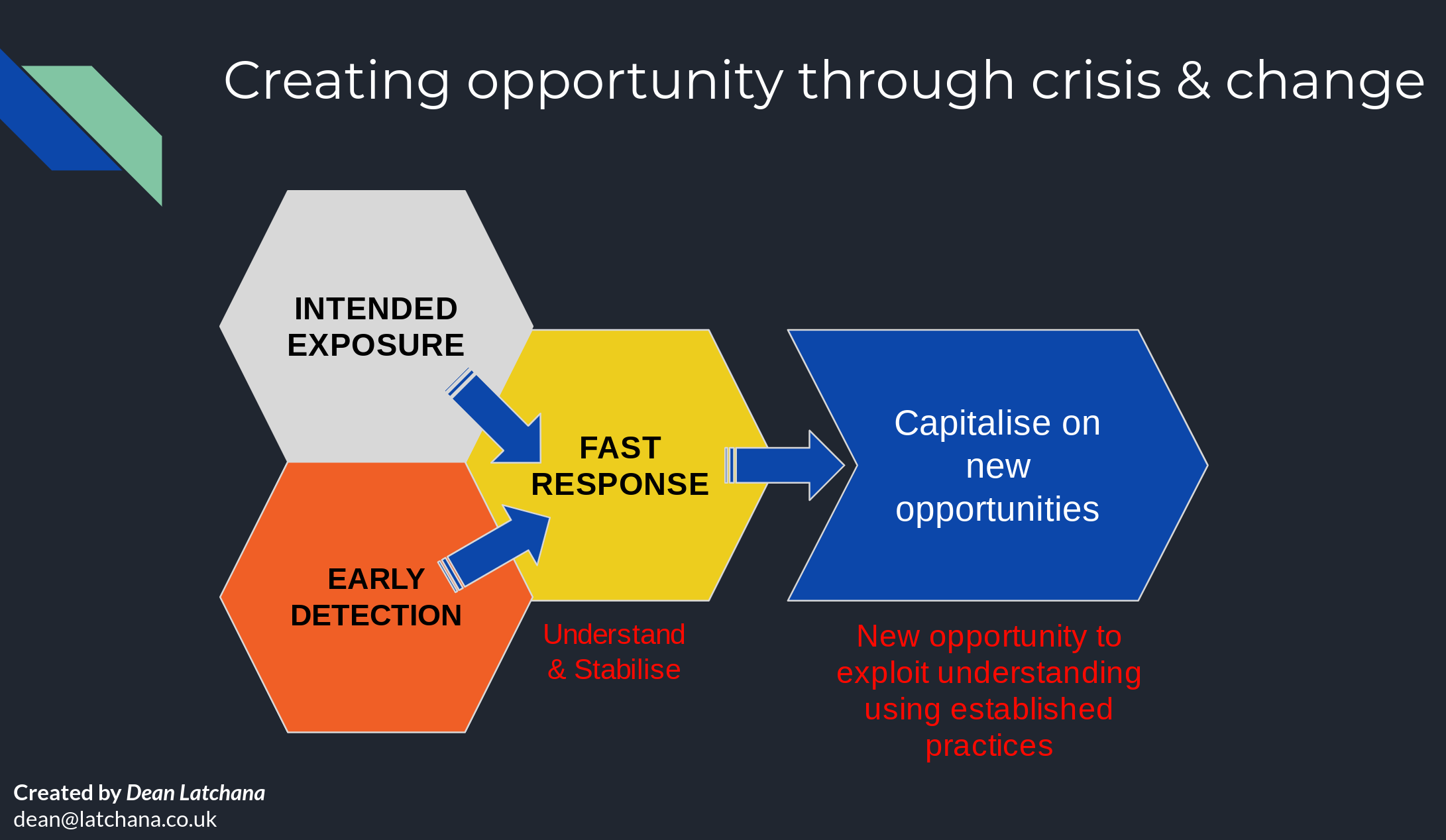In business, organisational resilience often relates to ensuring services and operations are maintained, or return to their current state after a period of instability.
However, there is an extension of resilience that organisations can utilise to continuously evolve, find new stable states and rapidly seek novel opportunities.
These benefits can result from intended low exposure to instability that would otherwise be too brand damaging in high degrees.
Examples of types of organisational resilience
Barclays: Resilience testing used to ensure existing service & operations are maintained
Netflix: Increases resilience from purposeful disruption of infrastructure – Chaos Monkey
Domino’s (USA): In 2010, recovered brand image through a self-critical ad campaign
Walmart: During Hurricane Katrina crisis, Walmart used their logistics capability to provide disaster relief to local communities; thus capitalising on this Black Swan event
Stabilise rapidly and exploit new learning
Whether instability is intentional or a result of external factors, organisations should be structured to rapidly respond, and capitalise on new understanding
References
Barclays: Reference on request
Netflix: Chaos Monkey
Domino’s (USA): How Domino’s Pizza Reinvented Itself
Walmart: How Wal-Mart used Hurricane Katrina to repair its image
Find out more
Resilient Organizations: How to Survive, Thrive and Create Opportunities Through Crisis and Change – Erica Seville (2016)
Antifragile – Nassim Taleb (2012)
My mini-series of articles on organisational resilience (2018)
I’m available to deliver a talk on Agile and Organisational Resilience.
Contact Dean Latchana to learn more about how organisations can benefit from intentional disruption and crises.
(dean@latchana.co.uk)

